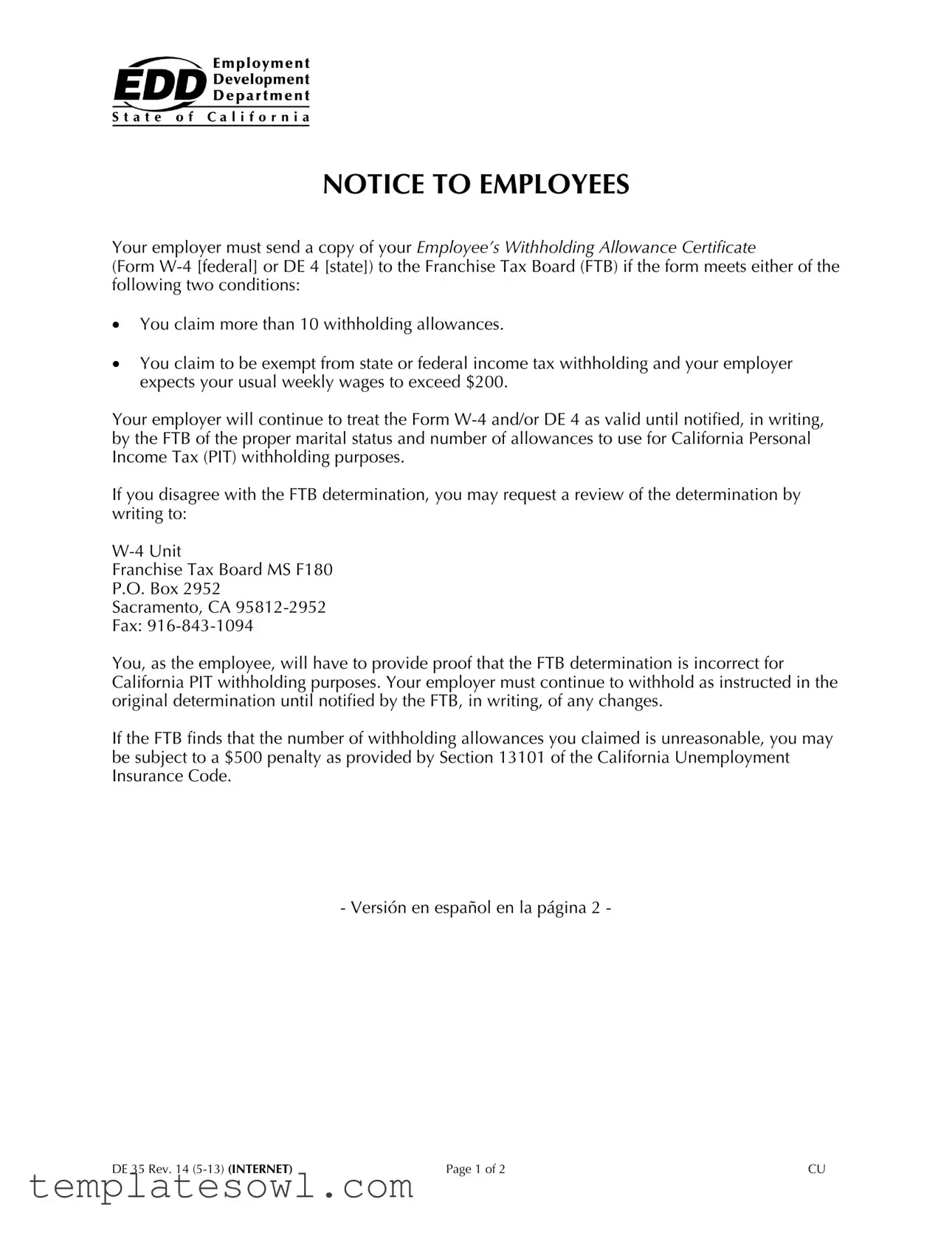What is the purpose of the CA DE35 form?
The CA DE35 form serves as a notice to employees about the conditions under which their employer must send a copy of the Employee’s Withholding Allowance Certificate, such as Form W-4 or DE 4, to the Franchise Tax Board (FTB). It ensures that proper tax withholding practices are followed for California Personal Income Tax purposes.
When must my employer send my withholding allowance certificate to the FTB?
Your employer is required to send your withholding allowance certificate to the FTB if you claim more than 10 withholding allowances or if you claim to be exempt from state or federal income tax withholding and your expected weekly wages exceed $200.
What happens if I disagree with the FTB's determination?
If you disagree with the FTB’s determination regarding your withholding allowances, you may request a review. To do this, write to the W-4 Unit at the Franchise Tax Board, providing your reasons and any necessary documentation to support your claim.
What is the penalty if the FTB finds my claimed allowances unreasonable?
If the FTB determines that the number of withholding allowances you claimed is unreasonable, you may incur a penalty of $500. This penalty is outlined in Section 13101 of the California Unemployment Insurance Code.
How long does my employer consider my withholding forms valid?
Your employer will treat your forms, either W-4 or DE 4, as valid until they receive written notification from the FTB regarding your marital status and the number of allowances to use for withholding purposes.
What should I do if I believe my employer is incorrectly withholding taxes?
If you believe your taxes are being withheld incorrectly based on the FTB’s determination, you must provide proof that the FTB's decision is incorrect. Until the FTB notifies your employer in writing of any changes, your employer must continue to withhold as directed by the original determination.
Can I receive a copy of the CA DE35 form in another language?
Yes, the CA DE35 form is available in Spanish. If you need assistance or a translated version, please contact your employer or the Franchise Tax Board directly.
What information do I need to provide when requesting a review from the FTB?
When requesting a review from the FTB, include your name, contact information, details of your withholding allowances, and any documents that support your disagreement with their determination. Clear documentation will help facilitate the review process.
What are the consequences of failing to comply with FTB regulations?
Failure to comply with FTB regulations may result in your employer continuing to withhold taxes based on an incorrect determination, which could lead to financial implications for you, including potential penalties and differences in your expected tax returns.
How often should I review my withholding allowances?


